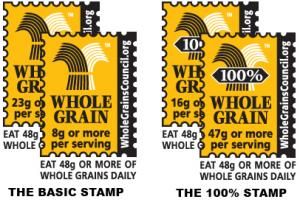
Credit: XiXinXing/Thinkstock.com
It is no secret that breakfast is an important meal. Eating breakfast provides you with physical and mental energy to start the day, along with vitamins and minerals. Cereal is a quick, versatile, and budget-friendly breakfast choice. The benefits of eating a healthy cereal include increased fiber intake and lower body weight (Barton et al. 2005). However, navigating the cereal aisle at your local grocery store can be an overwhelming experience. Continue reading to learn more about cereal and how to find your new go-to breakfast choices.
Choose Whole Grains and Fiber
Whole grains contain the entire grain kernel, which has three parts: the bran, the endosperm, and the germ. The bran is rich in fiber and the germ is packed with nutrients. Refined grain products have the bran and germ removed, which strips the grain of the nutrients and fiber found in whole grains. Refined grains are enriched to add back the nutrients but often contain less fiber.
Looking for clues on the breakfast cereal box will help you determine if the cereal contains whole grains. Look for the "Whole Grain" stamps (see Figure 2). There are two different versions of the stamp. One is marked "100%". Labels with the 100% whole grain stamp are the best cereal choices because all the grain ingredients are whole grains. The other version, the basic stamp, shows a product that contains at least half a serving of whole grains. The table below lists examples of cereals that are labeled with the 100% Whole Grains Stamp.

Another clue is to read the ingredient list. Choose a cereal that lists whole wheat, whole oats, whole-grain corn, brown rice, whole grain rye, or whole-grain barley as the first ingredient. For more information on whole grains, please visit https://edis.ifas.ufl.edu/fs161.
A high-fiber diet helps to reduce the risk of heart disease, type 2 diabetes, and cancer (Dahl and Stewart 2015). Fiber also helps with digestive health and may keep you feeling full longer. Look on the Nutrition Facts panel and aim for a breakfast cereal that contains at least 3 g of fiber per serving. Adult men should consume about 38 g and women should consume about 25 g of fiber daily (Institute of Medicine, Food and Nutrition Board 2005). Unfortunately, the average American is not reaching these goals (Reicks et al., 2014). By choosing a breakfast cereal containing a good amount of fiber, you will be closer to reaching your goal. Choosing whole-grain breakfast cereals will help to increase your fiber intake. See Table 1 for the fiber content of some whole-grain breakfast cereals. Some breakfast cereals contain added fiber that can also boost your fiber intake. Table 2 provides two examples of breakfast cereals with added fiber. For more information about foods with added fiber see https://edis.ifas.ufl.edu/fs235.
Click here for a list of foods, including cereals, containing whole grains.
Watch Out for Sugar
When comparing breakfast cereals, choose those with less added sugar. This information can be found on the Nutrition Facts panel. Key terms that may alert you to a high-sugar cereal are "frosted" and "honey." Some breakfast cereals can contain as much as 20 g of sugar per serving. That is 5 teaspoons of sugar! Table 2 lists examples of breakfast cereals that are low in sugar. Note that cereals low in sugar vary in fiber content, and some may not be whole grain.
Keep in Mind Serving Size
The serving size for a breakfast cereal can be found on the Nutrition Facts panel. The typical serving sizes range from ½ to ¾ cup, providing about 100 to more than 200 calories per serving. Try using a measuring cup to get an idea of the serving size of each new cereal. Eating more than the serving size may provide you with more calories than intended.
Shop Smart
Consider the number of servings per box when comparing prices. A more expensive box may contain more servings, making the price per serving less costly. Also, look for generic supermarket brands that may be less expensive versions of your favorite name-brand cereals. These are often displayed on higher or lower shelves, with the more expensive, name-brand products placed at eye level.
If you are shopping for children, consider avoiding traditional children's cereals. This may be hard, as your kids will most likely be drawn to the bright boxes and fun characters. These cereals may provide more sugar and sodium per serving and contain less fiber and protein (Schwartz et al. 2008).
Dress Up Your Cereal with Fruit and Dairy
Most people eat their breakfast cereal with milk. This adds protein, calcium, and other important nutrients that will keep your muscles and bones strong and support overall good health. If you choose a granola-type cereal, you might want to add yogurt instead, with little added sugar. Choose low-fat or fat-free versions when choosing milk and yogurt.
It is recommended that the average adult consume about 2 cups of fruit per day (USDA and USDHHS 2020). Try adding sliced banana or a cup of berries to your breakfast cereal. Adding fruit to your breakfast will increase your fiber, vitamin, and mineral intake.
Take-Home Tip
To maximize health benefits, choose a whole-grain breakfast cereal high in fiber and low in sugar. To learn more about breakfast cereals or other nutrition-related topics, contact the Family and Consumer Sciences agent at your local UF/IFAS Extension office. A registered dietitian nutritionist is also a reliable source of nutrition information.
References
Barton, B.A., A.L. Eldridge, D. Thompson, S.G. Affenito, R.H. Striegel-Moore, D.L. Franko, A. Albertson, and S.J. Crockett. 2005. "The relationship of breakfast and cereal consumption to nutrient intake and Body Mass Index: The National Heart, Lung, and Blood Institute Growth and Health Study." Journal of the Academy of Nutrition and Dietetics 105 (9), 1383–1389.
Dahl, W.J. and M.L. Stewart. 2015. "Position of the Academy of Nutrition and Dietetics: Health implications of dietary fiber." Journal of the Academy of Nutrition and Dietetics 115(11), 1861–1870.
Institute of Medicine, Food and Nutrition Board. 2005. "Dietary Reference Intakes for Energy, Carbohydrate, Fiber, Fat, Fatty Acids, Cholesterol, Protein, and Amino Acids (Macronutrients)." Washington, DC: National Academy Press.
Reicks, M., S. Jonnalagadda, A.M. Albertson, and N. Joshi. 2014. "Total dietary fiber intakes in the US population are related to whole grain consumption: results from the National Health and Nutrition Examination Survey 2009 to 2010." Nutrition Research 34(3): 226–3.
Schwartz, M., L. Vartanian, C. Wharton,and K. Brownell. 2008. "Examining the nutritional quality of breakfast cereals marketed to children." Journal of the Academy of Nutrition and Dietetics 108(4), 702–705.
U.S. Department of Agriculture and U.S. Department of Health and Human Services. Dietary Guidelines for Americans, 2020-2025. 9th Edition. December 2020. Available at DietaryGuidelines.gov.